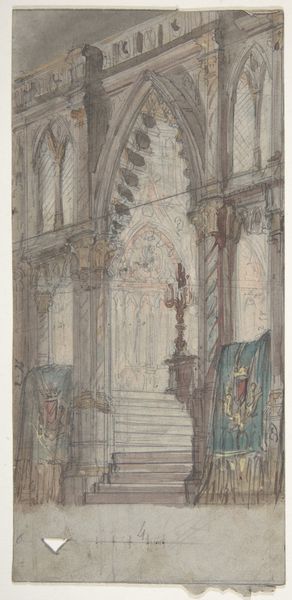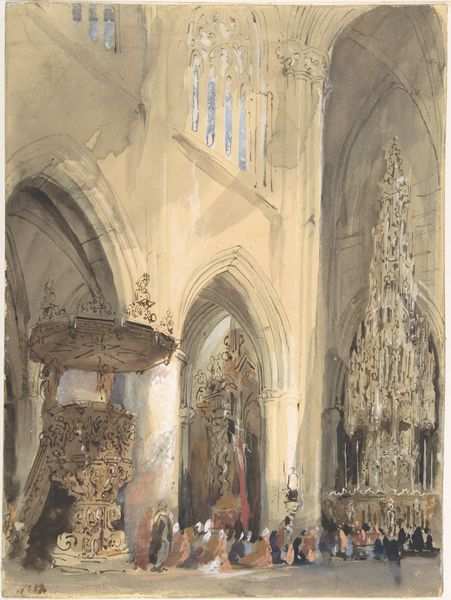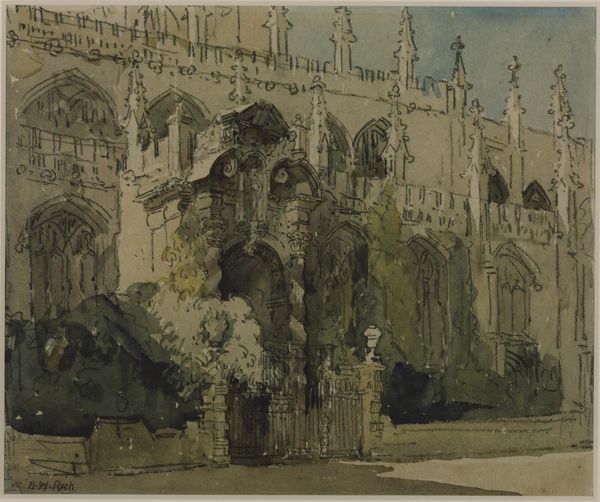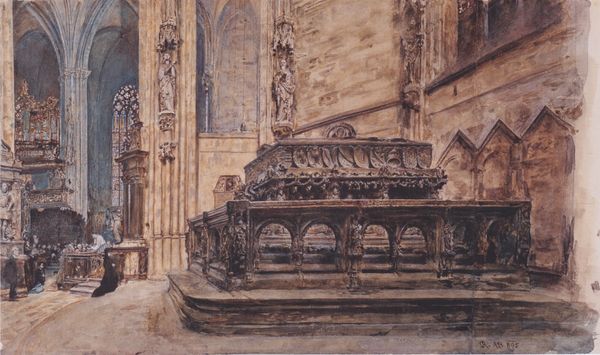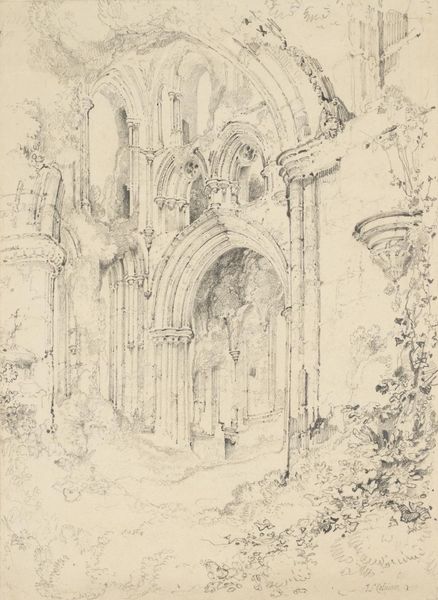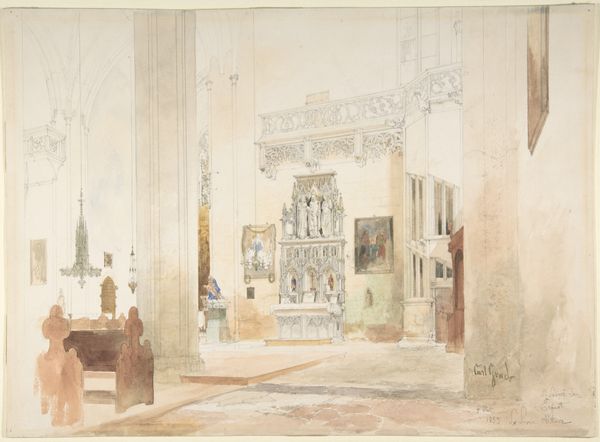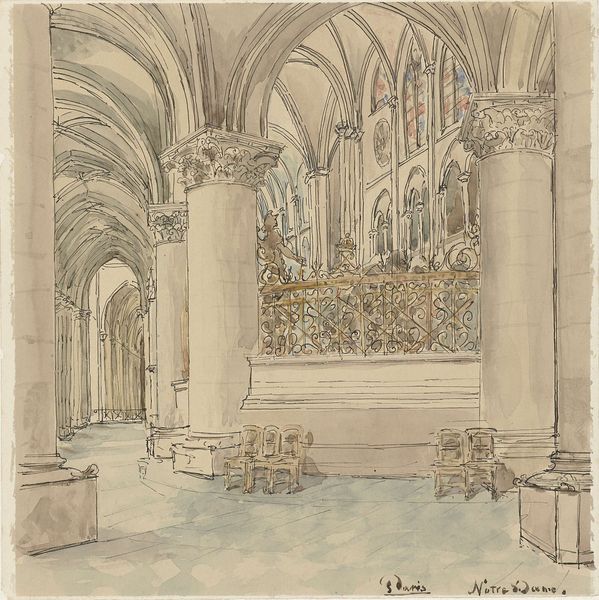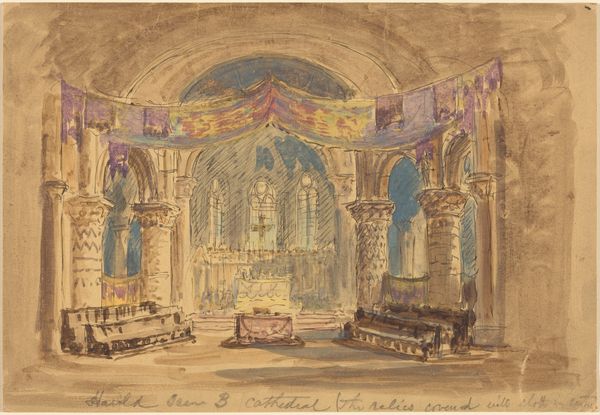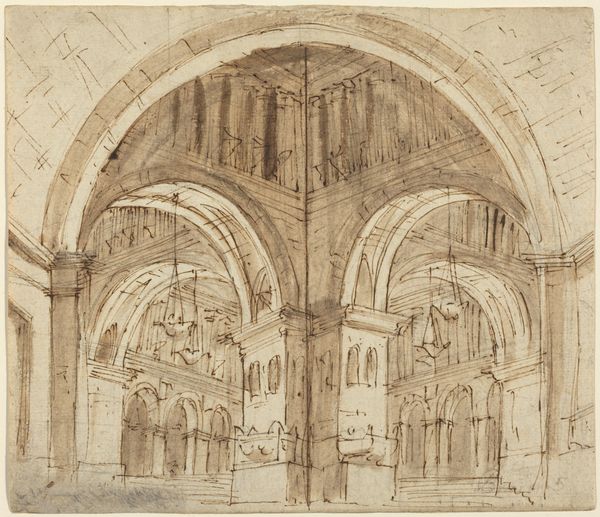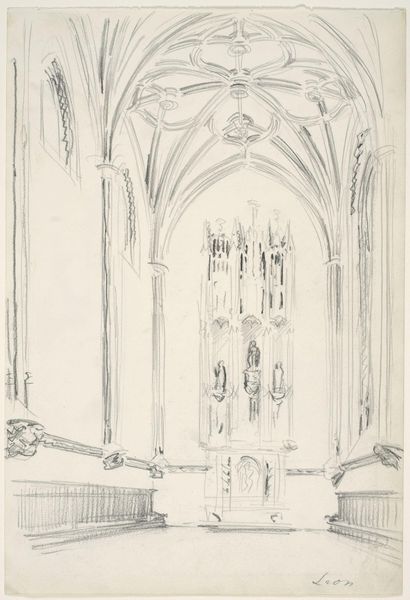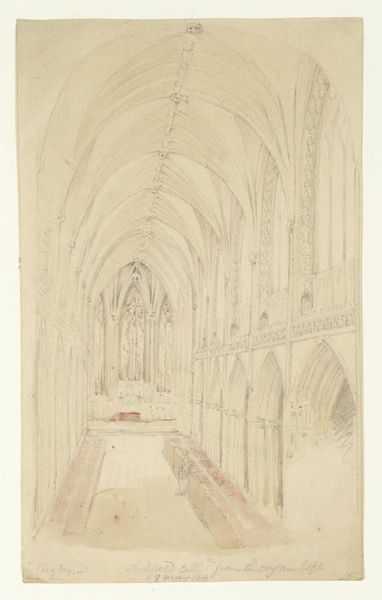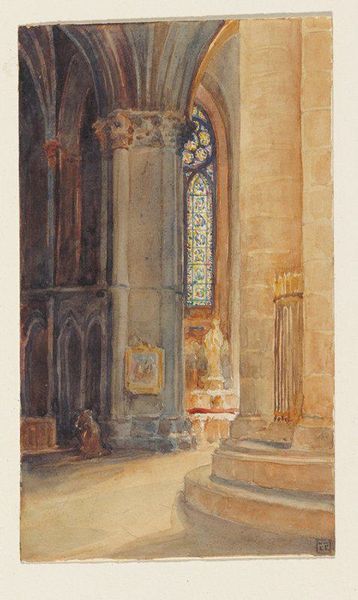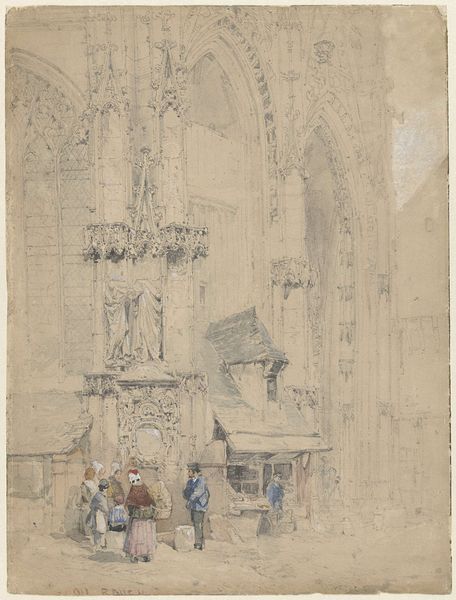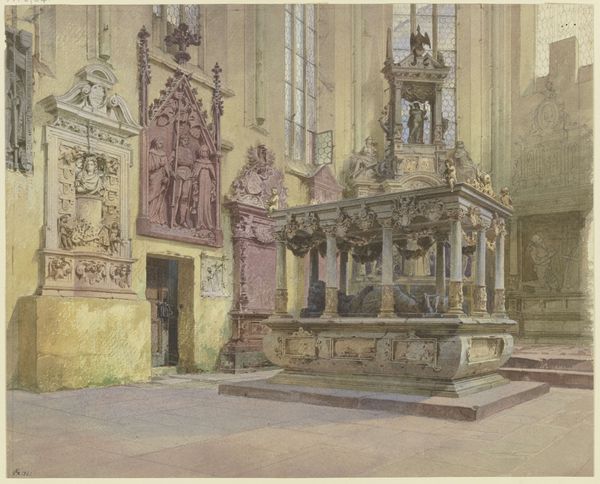
drawing, watercolor
#
drawing
#
landscape
#
watercolor
#
watercolour illustration
#
genre-painting
#
history-painting
#
watercolor
Dimensions: overall: 18.6 x 25.6 cm (7 5/16 x 10 1/16 in.)
Copyright: National Gallery of Art: CC0 1.0
Editor: Here we have Louis Haghe's watercolor and ink drawing titled "Interior of a Church with a Wall Tomb and Medieval Font." The rendering is delicate, almost dreamlike. How would you approach interpreting the materials and techniques at play here? Curator: Well, consider what watercolour as a medium signifies. Its portability aided the proliferation of architectural studies in the 19th century, creating a visual archive but also fostering an aestheticization of ruins. Haghe's use of it invites questions: Was he commissioned by a patron, documenting the architecture for posterity? Or was it driven by market demand for picturesque scenes? Editor: So, thinking about its function as a commodity changes how we see the piece. I hadn’t thought about it like that. Curator: Exactly! The type of paper Haghe selected, the pigments he deployed, these all affect the artwork's cost, and by extension its market value. How does that affect its reception and position it within the art market? We must also not ignore the role of the patron, who probably stipulated certain requirements from the artwork, in addition to paying for materials and labor. Editor: It’s interesting to consider the labor too, his hand meticulously creating those details, especially on the tomb and archway. Was it a skilled job? Were those skills valued economically? Curator: Precisely! Think about the craftsmanship involved in rendering stone textures, or the perspectival accuracy in the architectural structure. It also points to the relationship between the artist, his labor and the patrons. Did this type of production have a place in a broader society? Who consumes and upholds it, and what do they believe about these aesthetic representations of sacred spaces? Editor: Wow, I see this piece in a new light now. It's not just a pretty picture, but a record of material and labor relations. Curator: Indeed. By focusing on these production and consumption contexts, we avoid simply seeing this drawing as beautiful. Instead, it can open into broader discussion around artistic patronage, market dynamics, and the artistic value assigned to craft.
Comments
No comments
Be the first to comment and join the conversation on the ultimate creative platform.
